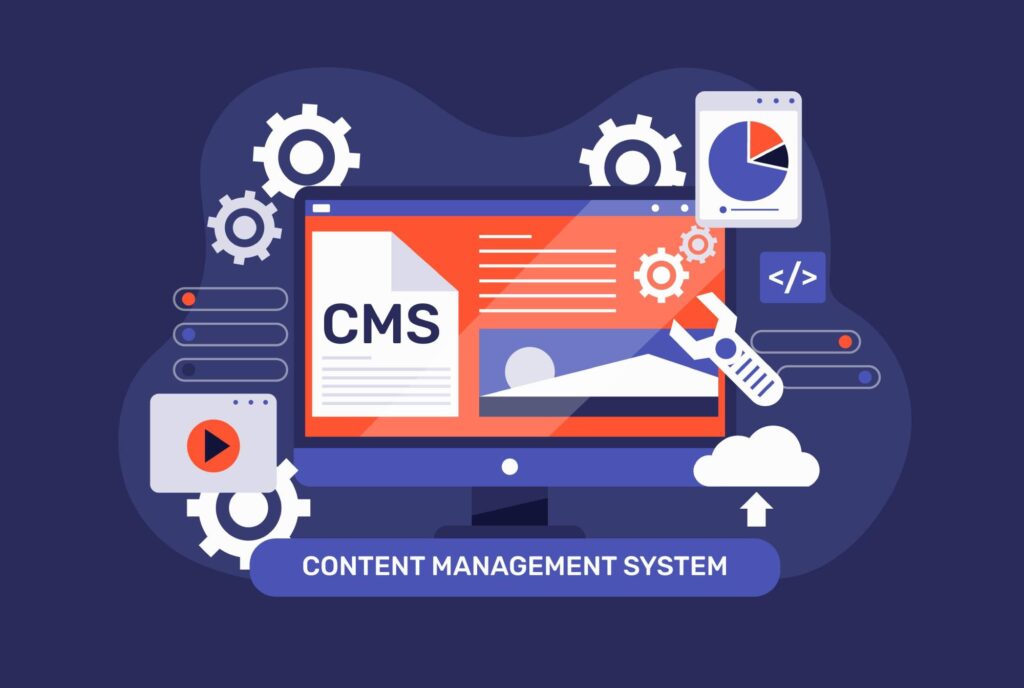
Headless CMS and API-First Architecture: The Future of Flexible Web Development in 2025
Headless CMS and API-First Architecture: The Future of Flexible Web Development in 2025
Published on: September 25, 2025
Tags: Advance Web Development, API-First Architecture, Headless CMS, Web Development
Discover how Headless CMS and API-First Architecture revolutionise web development with faster delivery, flexibility, and scalability. Learn actionable tips to implement these modern technologies.
Introduction
In 2025, businesses and developers demand faster, more scalable, and omnichannel-ready web solutions. Headless CMS combined with an API-First Architecture has emerged as the definitive approach to building flexible and future-proof digital experiences. This article unpacks these technologies, explores their benefits, and offers actionable advice to help teams adapt and thrive in today’s competitive digital landscape.
What is Headless CMS?
Unlike traditional monolithic CMS platforms, a Headless CMS decouples content management (backend) from content presentation (frontend). It stores content centrally and delivers it via APIs—typically RESTful or GraphQL—to any device or interface.
Core Advantages of Headless CMS
- Flexibility for Frontend Developers: Use any framework or technology for building the user interface, such as React, Vue, or Angular.
- Omnichannel Content Delivery: Serve content seamlessly to websites, mobile apps, IoT devices, digital kiosks, and more.
- Faster Time to Market: Content teams can publish without dependency on frontend release cycles.
- Improved Scalability and Security: Cloud-based and API-driven architectures handle high traffic and reduce attack surfaces.

Understanding API-First Architecture
API-First means designing and building APIs before developing any consumer-facing frontends or systems, ensuring that all components interact through clear, robust APIs.
Benefits of API-First Design
- Parallel Development: Backend and frontend teams work independently, speeding up development.
- Tech Stack Freedom: Easily swap frontend frameworks or backend services without disrupting content flow.
- Strong Security: APIs expose only necessary endpoints following authentication and role access control.
- Future-Proofing: Simplifies integration of emerging channels and technologies.
How Headless CMS and API-First Work Together
Headless CMS platforms are naturally API-First by delivering content exclusively via APIs. This synergy provides maximum flexibility for businesses to deliver personalised, dynamic content experiences at scale.
- Content stored once and repurposed everywhere.
- Marketing teams update content freely without developer delays.
- Developers build rich, interactive front-end optimised for each channel.
- Back-end operations decoupled from frontend UX enable faster iteration.
Solving Common Challenges: Zero-Click Searches & Low CTR
While headless setups boost performance and user experience, SEO still requires strategic focus. Modern search engines increasingly offer “zero-click” answers via rich snippets, which can reduce click-through rates.
- Use structured data schemas (e.g., FAQ, How tos and Articles) to enhance search result visibility.
- Craft engaging meta titles and descriptions, emphasising unique value.
- Focus on long-tail keywords and user intent for qualified organic traffic.
- Ensure fast page loading to improve user satisfaction and rankings.

Implementing Headless CMS and API-First Architecture: Tips for 2025
1. Choose the Right Headless CMS Platform
- Look for strong API support (GraphQL & REST).
- Check the ease of integration with existing tools and workflows.
- Prioritise security features like role-based access and SSO.
2. Design Your APIs Thoughtfully
- Maintain consistent, well-documented endpoints.
- Implement strong versioning to prevent breaks during updates.
- Keep APIs performant with caching and rate limiting.
3. Enhance Frontend Flexibility
- Leverage popular modern JavaScript frameworks.
- Build reusable UI components powered by API data.
- Optimise for mobile responsiveness and accessibility.
4. Optimisation for SEO and User Engagement
- Use semantic HTML and schema markup strategically.
- Focus on content relevance and user intent alignment.
- Ensure fast load times by optimising API payloads and frontend performance.
Frequently Asked Questions (FAQs)
What is a Headless CMS?
A Headless CMS is a content management system that decouples the backend content repository from the frontend presentation layer. Instead of delivering fully rendered web pages, it stores and manages content centrally and delivers raw content via APIs (like REST or GraphQL) to any device or interface—websites, mobile apps, IoT, and more. This separation gives developers the freedom to build the frontend with any technology while content editors manage content independently and efficiently. For Example, Strapi is a very famous headless CMS.
How does API-First Architecture improve web development?
API-First Architecture means designing backend services to expose clear, robust APIs before building frontends. This approach allows frontend and backend teams to develop independently and in parallel, reduces integration bottlenecks, enhances security by controlling data access through authenticated endpoints, and future-proofs applications by enabling seamless integration with new platforms and devices without full rewrites.
What are the benefits of using Headless CMS?
- Flexibility for Developers: Use any frontend framework, such as React, Angular, or Vue.js, without CMS constraints.
- Omnichannel Content Delivery: Deliver the same content to websites, mobile apps, voice assistants, digital signage, and more.
- Faster Time-to-Market: Content teams can update without waiting for frontend releases, enabling quicker updates and launches.
- Scalability and Security: API-driven architecture allows handling high traffic with improved security by isolating the content repository from the presentation layer.
- Better Collaboration: Developers and content editors work independently but cohesively, improving productivity and reducing bottlenecks.
- Future-Proof Architecture: Easily switch or add frontend frameworks, channels, and integrations without a complete rebuild.
How can I implement structured data with a Headless CMS?
To implement structured data in a headless CMS setup, use JSON-LD scripts that define schema markup types (such as FAQ, HowTo, Article, Product) and embed them in the frontend code. Because headless CMS delivers raw content via APIs, you typically add the schema markup in the frontend layer that consumes this content. Use tools like Google’s Structured Data Markup Helper or schema generation libraries to create the JSON-LD. Validate your markup with Google’s Rich Results Test to ensure eligibility for enhanced search results.
Conclusion
Headless CMS combined with API-First Architecture is the cornerstone of agile, scalable, and omnichannel digital strategies in 2025. Adopting these technologies helps organisations stay competitive, deliver richer experiences, and meet the rising demands of users and search engines.
Ready to future-proof your web development strategy? Bookmark Squareloops for expert insights, guides, and updates on cutting-edge web technologies and SEO best practices.
Related Categories: Artification Intelligence (AI), CSS, hosting Solutions, Javascript, news, nodejs, React, SEO, Social, step-by-step guides, Uncategorized, Web Development, Webflow, wordpress